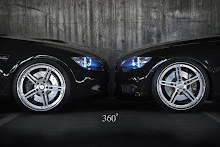 The F/A-22 is the world's first stealth air-to-air fighter, designed to be unseen at long range and deadly in close-in air combat. It can also strike ground targets with precision accuracy. Its design gives pilots unmatched maneuverability in the air. The F/A-22 was originally designed to replace the F-15 Eagle. Because of the Eagle's versatility, the rising cost of developing the F/A-22 and the changing world scene, the Raptor now supplements the F-15 instead of replacing it. When the F/A-22 program began in the early 1980s, the Air Force wanted a fighter to counter the threat from the Soviet Union. Since the end of the Cold War, the need for an air-superiority fighter has fallen: Pentagon war planners expect future conflicts to be fought against enemies with small air forces or none at all.
The F/A-22 is the world's first stealth air-to-air fighter, designed to be unseen at long range and deadly in close-in air combat. It can also strike ground targets with precision accuracy. Its design gives pilots unmatched maneuverability in the air. The F/A-22 was originally designed to replace the F-15 Eagle. Because of the Eagle's versatility, the rising cost of developing the F/A-22 and the changing world scene, the Raptor now supplements the F-15 instead of replacing it. When the F/A-22 program began in the early 1980s, the Air Force wanted a fighter to counter the threat from the Soviet Union. Since the end of the Cold War, the need for an air-superiority fighter has fallen: Pentagon war planners expect future conflicts to be fought against enemies with small air forces or none at all.F/A-22 Specifications
- Primary Function: Fighter, air-dominance
- Wingspan: 44 feet 6 inches (13.5 meters)
- Length: 62 feet 1 inch (18.9 meters)
- Height: 16 feet 5 inches (5 meters)
- Powerplant: Two Pratt & Whitney F119-PW-100 engines capable of supercruise and thrust vectoring
- Speed: Mach 1.8 (supercruise: Mach 1.5)
Three of America's largest defense contractors -- Lockheed Martin, Boeing and Pratt & Whitney -- joined together to develop and produce the F/A-22.
Stealth Capability : Basics
Radar works by sending radio waves out from an antenna and collecting the waves that bounce back from any objects. On a radar screen in an aircraft or in a ground-based radar station, an airplane appears as a blip. The larger the aircraft, the larger the blip appears on the screen. Other objects, such as flocks of birds, can also show up. Aircraft designers have worked for years to minimize the radar signature of an aircraft. If the radio waves are deflected or absorbed so they don't return to the radar antenna, then the airplane is invisible or could be mistaken for a flock of birds or other non-threatening object.
Aircraft designers use irregular sawtooth edges, a jumble of curved surfaces and other design tricks to deflect radar waves in unexpected patterns. Planes are painted with thick paint that can absorb radar waves instead of reflect them. The idea is to make the aircraft appear to disappear into thin air.





0 comments:
Post a Comment